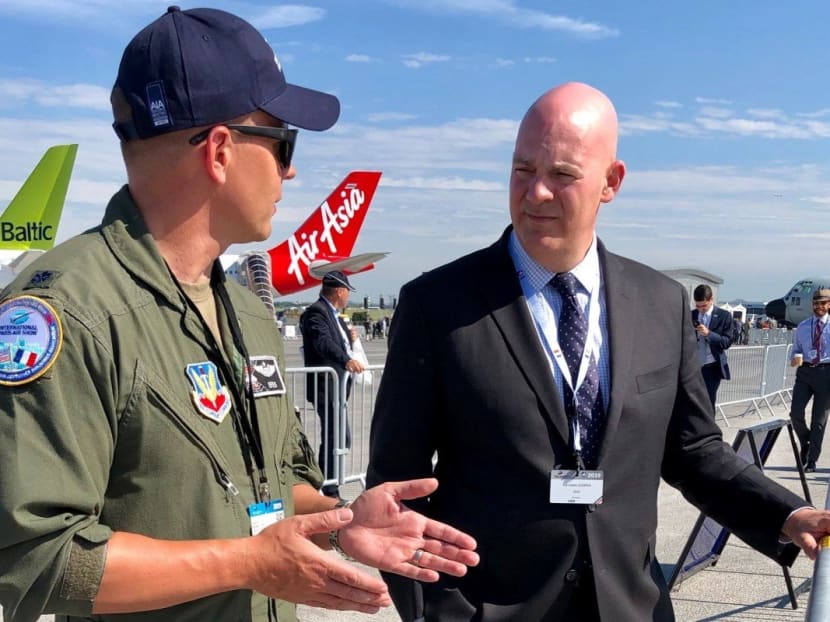US warns China about using Singapore Airshow as ‘platform for exploitation and theft’
HONG KONG — Even as China battles the coronavirus, it should not use this week’s Singapore Airshow as an opportunity to strong-arm US partners or steal intelligence or technological secrets, said a senior US State Department official.
HONG KONG — Even as China battles the coronavirus, it should not use this week’s Singapore Airshow as an opportunity to strong-arm US partners or steal intelligence or technological secrets, said a senior US State Department official.
In a bid to counter Beijing’s growing footprint in the Indo-Pacific region, Washington is bringing its largest-ever delegation to the air show this week as it steps up “global power competition” with China, said Mr R. Clarke Cooper, assistant secretary of state for political-military affairs.
“We do not want to see them using the air show as a platform for exploitation and theft,” he said in an interview in his State Department office, “not only our technologies but also others’ technologies”.
Mr Cooper, who has had a range of US military, diplomatic and intelligence jobs in Iraq, Germany and elsewhere, said Washington was watching for any sign that Beijing was trying to expand its regional influence “aggressively”.
That includes efforts at the air show or more broadly to pile significant debt on customers purchasing particular weapon systems or otherwise jeopardise the sovereignty of US allies, he said.
“And also dumping subpar or less than optimal material on a partner, putting their security at risk,” said Mr Cooper, 48, whose job includes liaising with the Pentagon, promoting US weapon sales and supporting alliances under the Indo-Pacific strategy aimed at countering China’s influence in the region. “Yes, we have an issue with that.”
The Chinese Embassy in Washington did not reply to a request for comment.
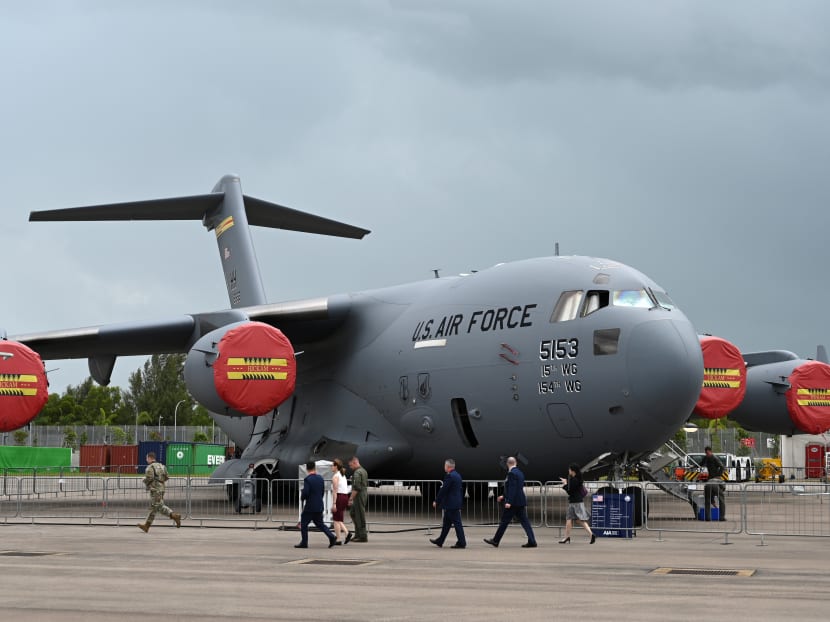
Even as China reels from the health, political and diplomatic fallout of the coronavirus, it has worked to maintain its presence and counter US chest-thumping with some of its own.
Despite Singapore’s ban on all recent visitors from China and cancellation by numerous Chinese arms exporters, the People’s Liberation Army is sending dozens of personnel and readying its Air Force aerobatics team to perform there for the first time. Chinese personnel will face medical screening and regular temperature tests.
Washington is also scaling back, although Mr Cooper said the US presence would be “robust”, with the biggest “corral” or designated area at the air show. Originally slated to include 150 companies and top State, Defence and Commerce department officials, several US representatives and companies, including Textron, Raytheon and Lockheed Martin, have pulled out.
The air show runs from Tuesday (Feb 11) through Sunday, with organisers advising arms dealers and others to avoid shaking hands and instead use other greetings “such as bowing or waving”.
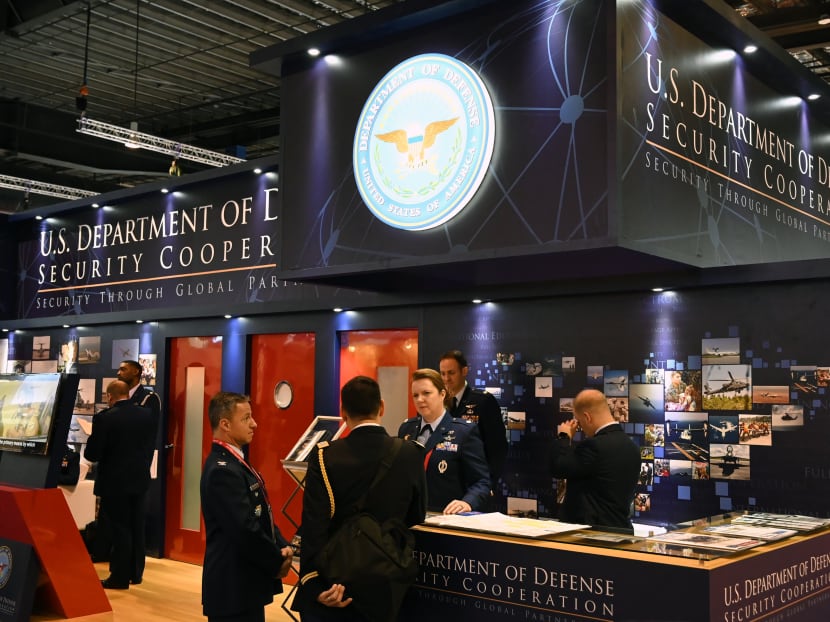
Under President Xi Jinping, China has expanded its arms industry and restructured the PLA, aiming for “modernisation” by 2035 and “world class” status by 2049. China’s exports of major arms have risen by 208 per cent since 2000, according to the Stockholm International Peace Research Institute (SIPRI).
China in this “new competitive market space” tends to offer “cheaper, cut-rate versions” of weapon systems, Mr Cooper said. While the Chinese may undercut the US on price, however, buyers risk lower quality, a large debt burden and nothing like the training and after-sales service the US offers, he said.
Analysts say the Chinese defence industry is becoming increasingly competitive, particularly involving armed drones. “While quality and performance of Chinese weapons systems remains variable, their price has been a major selling point,” said Ms Elsa Kania, a national security fellow at the Centre for a New American Security.
The US is the world’s largest weapons exporter by far, selling a multiple of what Beijing ships abroad. But China is gaining ground, particularly when its overall production is considered. According to a report released by SIPRI in January, China has surpassed Russia to become the world’s second-largest arms maker.
Beijing’s total arms industry was US$70 billion (S$97 billion) to US$80 billion in 2017 — the range reflects China’s lack of transparency — compared with US$226.6 billion for the United States and US$37.7 billion for Russia.
“Conventional arms sales provide both commercial profits and political influence. China is actively promoting its arms sales to achieve both of these objectives,” said Ms Bonnie Glaser, director of the China Power Project at the Center for Strategic and International Studies.
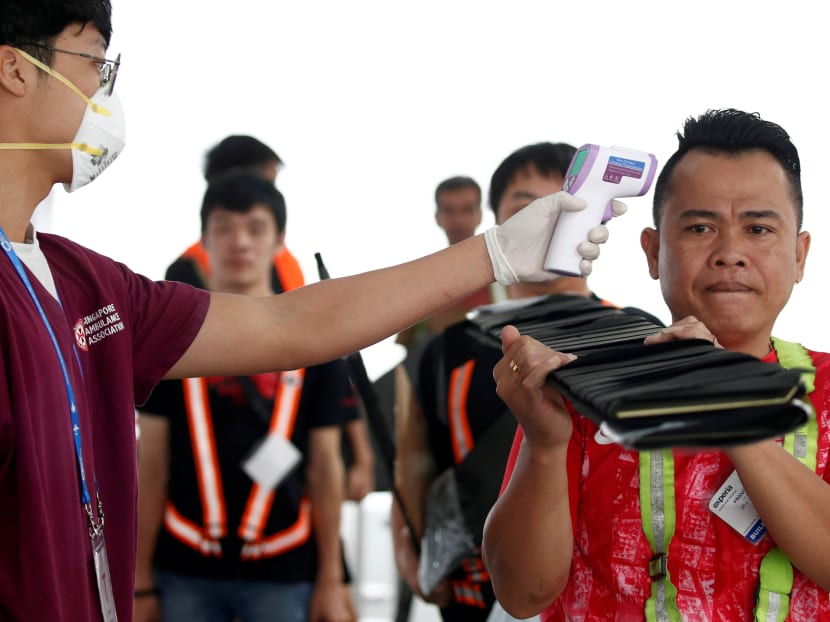
At the air show, Asia’s largest, the US is expected to demonstrate its F-22 Raptor, the Air Force's newest fighter aircraft; the F-35B Joint Strike Fighter, which is able to land vertically and has short take-off capability; and the workhorse B-52H Stratoforce. China is expected to showcase its Bayi J-10 multi-role fighters painted sapphire blue with red and white trim to “symbolise a sharp sword in the sky”.
According to a former US official formerly at the US embassy in Singapore: “The Chinese definitely look at air shows as a prime opportunity for intelligence gathering. The US uses the big ones as both a sales and diplomatic effort.”
“There is limited intelligence value with regard to Chinese capabilities,” he added.
Mr Cooper said Washington wasn’t asking other Asian nations to choose between the US and China in weapons sales or strategic partnerships. “They’re going to have to do their own calculus,” he said. But Washington does ask partners “what are they putting at risk with their own sovereignty and security”.
Among the risks, he said: exploitation by China through their geographical presence, construction and development projects; joint ventures with Chinese players who may be “different than they appear”; and communication technology introduced into their security and economic ecosystem.
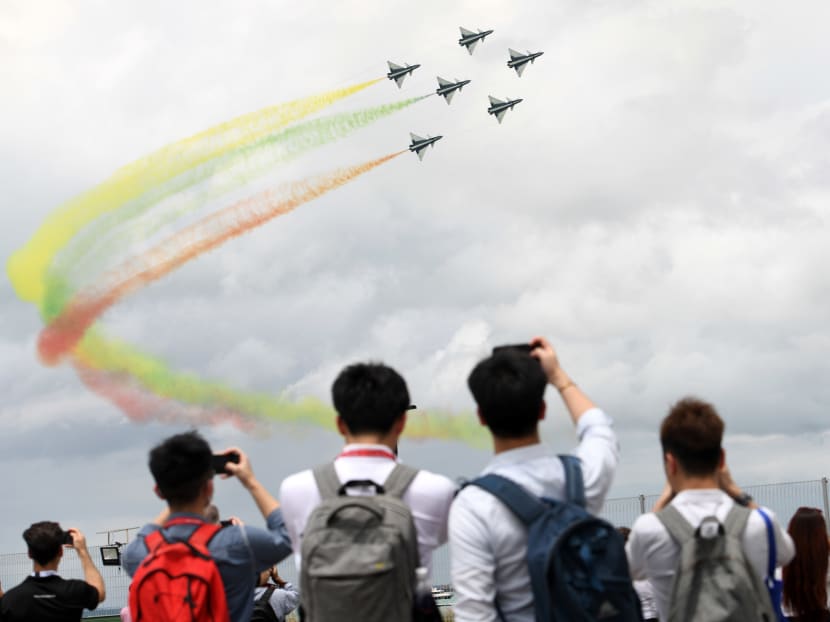
Even as Mr Cooper is promoting the US military-political agenda abroad, he has pushed to change the culture within. In 2010, he was elected executive director of the Log Cabin Republicans, an organisation that works within the party to advocate equal rights for lesbian, gay, bisexual and transgender Americans. And in 2014, he married Mr Michael J. Marin, a fellow Army officer.
That has taken some adjustment. Both men come out of a long military tradition — relatives from both families fought on both sides of the American Revolutionary War — and must, as a couple, juggle the demands of being deployed in different parts of the world.
At the wedding, neither one mentioned to their respective families that they would be separated within months as they headed off on different assignments. “I do remember specifically having family members say: “Oh, that's so unfair. You've both got deployments,” he said. “No, it is fair. It is super fair, it is so wonderfully fair.”
What’s notable is that gay couples are now mainstream enough to confront the same challenges long faced by military, diplomatic and intelligence families, he added.
“What Mike and I are experiencing is what everyone else has had to deal with. Which is what makes it wonderful.”
“We fought for this,” he added.
Mr Cooper said Washington continued to focus on Indo-Pacific maritime initiatives aimed at bolstering the ability of Pacific island and other regional players to check China’s expansion. This includes protecting their 200-nautical-mile (370km) exclusive economic zones, better tracking Chinese ships, ensuring commercial shipping flows and helping smaller states that have limited resources. The Trump administration has come under criticism for its slow pace in these areas.
Where small countries may not be able to afford naval vessels, Mr Cooper said, the US can offer them alternatives. These include coastguard ships, US port calls and help in ensuring that China is not violating treaties or agreements or cooperative arrangements with neighbouring countries on shared air or naval reconnaissance.
Washington also helps allies identify and deter state-supported Chinese fishing vessels from “essentially poaching” as well as sometimes conducting intelligence or harassment missions, “an emerging concern,” he added.
Another issue for the US is growing arms trade cooperation between Russia and China.
The combination of Russian “design genius with Chinese organisational and production prowess could be formidable indeed,” echoed the US publication The National Interest in a recent article.
But Mr Cooper played down that concern, noting that the two counties have a history of distrust. In the late 1960s, the two giants came to the brink of war.
“That is for them to manage,” he said. “Co-development between Russia and China, that is obviously something that two states can determine upon themselves. And it doesn't necessarily mean that they'll get a better product out of it.” SOUTH CHINA MORNING POST

